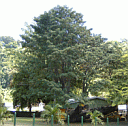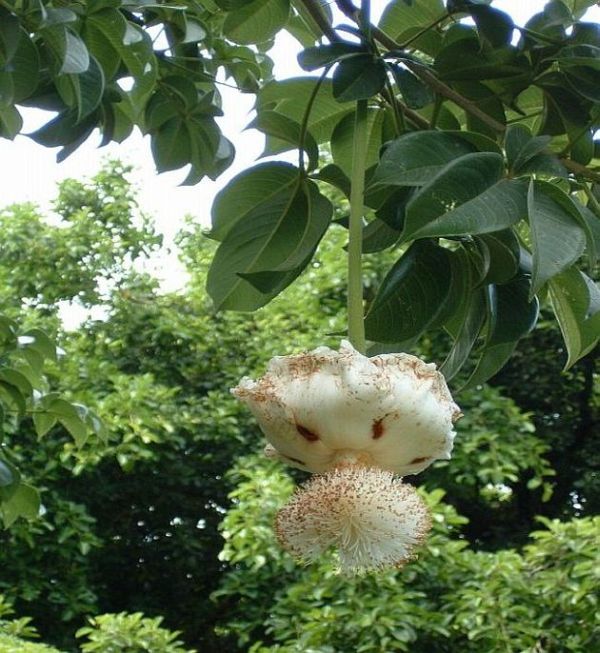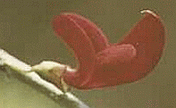


|

Arlington James
Plant Family: Belonging to the Bombacaceae family, which includes Wild Chestnut (Pachira sp) and Fromager or Silk Cotton (Ceiba pentandra).
Description: Regarded as the largest succulent plant in the world, and sometimes referred to as the "giant Baobab," it is an imposing tree, growing to 25-30 m tall (80-100 ft), with a very large trunk, up to 28 m in girth (90ft), and massive branches; bark may be 50-100 mm thick (2-4 in); leaves palmate with 5-7 leaflets, hairy underneath; large, attractive, pendulous flowers, with white stamens and petals; produces a large, ovoid, light brown fruit with whitish powdery pulp covering hard, black, kidney-shaped seeds; reportedly, fruit has six times more vitamin C than oranges and twice as much calcium as milk. The current tree in the Dominica Botanic Gardens is growing from a shoot which sprang from the stem of the original tree after it had been blown down by hurricane David in 1979.
Natural Habitat: Restricted to hot, dry woodland on stony, well drained soils, in low-rainfall, frost-free areas.
Origin and Distribution: Not native to Dominica; found in drier regions of Tropical Africa and Madagascar.
Uses: The wood is soft and spongy and not of much use; the bark on the lower part of the trunk can be harvested and pounded to retrieve a strong fibre to make various items such as mats, ropes, fishing nets, fishing lines, sacks, as well as clothing; the leaves are cooked as a vegetable and the sprouts of the young tree can be eaten like asparagus; due to huge trunk and unusually soft of wood, trees have been hollowed out and used as bars, shops and even prisons; medicinally, fruit, bark and leaves are used in Africa to treat fevers, kidney disease and other medical problems; for example, the white powdery substance in the seed, soaked in water, provides a drink used to treat fevers and other complaints..
Indigenous Legends and Anecdotes: In Africa, the tree is steeped in legend and superstition wherever it occurs. For example, in some parts it is worshipped as a symbol of fertility, and it is believed that a man who drinks an infusion of the bark will become strong!
References:
Baobab - Adansonia digitata. US National Tropical Botanical Gardens, Kalaheo, Hawaii, Oct. 2004 (ntbg.org).
Baobab: New exotic fruit to hit UK shops. (BBC News Online), UK, 15 July 2008 |



